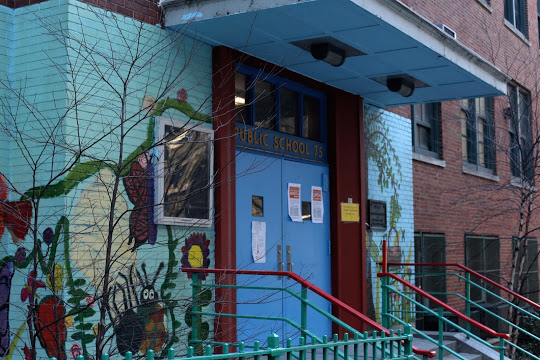I call myself, when asked, an exploratory writer. I often start a writing project with an amorphous idea, usually something slipping into the fabulist/surrealist vein, and maybe a working title. If I’m lucky, I have a first sentence that’s been stewing in my brain for a while, and if I’m even luckier, I’ve got a few plot points. But rarely do I have any more than that. And so I start writing, a chunk here, a chunk there, usually a page on any given project on a given day, and see where the words take me. The destination is often unknown and for a good long while. One of the biggest pieces of wisdom (if one can call it that) I share with students is that the sooner a writer accepts that a lot of the words they put down on the page aren’t going to make the final, polished version of a piece and embrace the fact that they will do a great deal of jettisoning for the greater good, the better and freer to explore they’ll feel and be.
Because I teach at a community college, I only get to work with my students for a small portion of their journey to become writers. Fortunately, my institution has established a robust creative writing program, and I have the chance to work with students in a wide range of writing classes. In my Intermediate Fiction Class, we begin each term with a collective exercise defining various craft terms, establishing what students know (or think they know) about good writing, what they don’t know (or think they don’t know), what they want to learn, what they want to write. On the first day of class, I also introduce them to a project that I’ve been assigning for a few years now: the semester-long story.
In my early days teaching creative writing, I tried to create this sense of exploration in a fairly traditional way: every class period began with a short writing prompt. At first, I brought these each day, but eventually I asked students to sign up for days on which they would provide them. As the term went by, I would ask students to flip through their notebooks or scroll through their files and re-engage something they’d written for one of these low-stakes exercises (I never collected them, and sharing what they’d written was always voluntary). The goal, as I told my students, was to get them started down many possible paths and eventually return to them so they could start developing these short bits of writing into something more substantial. The problem, though, was that this wasn’t happening. Students would complete these revisiting assignments, and every now and then—maybe once or twice each semester in a class of 18—a student would glom onto something written in these short bursts and dive into what they’d started, producing a workshop draft from the endeavor. Mostly, though, students left these exercises behind like their five-minute assignments.
As I do with much of my teaching pedagogy, I looked inward, toward my own processes as a writer, and thought about what has worked for me.
So I decided to change my approach. As I do with much of my teaching pedagogy, I looked inward, toward my own processes as a writer, and thought about what has worked for me. As I mentioned above, I am a slow writer in that I work on an individual project in tiny chunks each day. I will write, perhaps, a single page in a given story or novel at a time, spending the rest of my creative energy I have to expend in a day thinking about what might come next in that story. I came to this process by—as I think is the case with many writers—a decade or so of trial and error, trying out various approaches related to frequency, duration, time of day, etcetera, when it came to finding a strategy of writing that works best for me. So I thought to myself: how might I reproduce that “daily chunk” approach in my classes?
I begin the semester-long story on the first day of class by giving each student a legal pad raided from my office’s supply closet but immediately telling them that they will return this notepad to me at the end of each class session. Every day, in class, students will, in lieu of my former five-minute writing prompts, be given that amount of time to work on their story, picking up where they left off the day before. Their stories, I tell them, can begin anywhere and be about anything. I provide some optional prompts, which change every semester depending on what sounds interesting to me at the time: sometimes it’s a sentence, others a cluster of words. Maybe it’s a question or a description. It doesn’t matter; students aren’t compelled to follow it if they already have some idea that strikes them, but if they don’t, the goal is to give them somewhere, at least, to begin.
The catch, here, is that these five minutes per class session are all the students get. At the end of each class session, they return their notepad to me, where their story will wait for them until we meet again. I strongly suggest to them, when they receive their notepads for the second time, that they not look back: the concern here is not continuity or remembering what’s already on the page but on pushing forward, on discovering what could join the words already written down. Students often groan at this, at the way I watch them as they write, taking hawkish note of whose eyes start to wander back. I don’t actually forbid them from doing this, nor do I make a stink over anyone flipping backward to pages already full of words; after all, any writing, particularly exploratory writing, should be enjoyable, a process of fulfilling discovery rather than something that feels onerous, mucky. I may make jokes every now and then about students returning to previous pages, but I make it clear that they aren’t in serious violation of any rules.
The concern is not continuity or remembering what’s already on the page but on pushing forward, on discovering what could join the words already written down.
Near the semester’s end, I break the embargo on students taking the notepads home with them. They’re given a few weeks as we start to wrap up the term to review their work. They type up their stories and are finally allowed to revise, edit, and excise. I tell them they need to find an ending for their story, even if they aren’t satisfied by it. Students gobble their notebooks up, happy to finally take them home. The drafts they submit for this assignment are graded (as I tell them) on being completed on time rather than for any qualitative features: after all, exploratory writing becomes not a matter of excitement and surprise but a matter of fear and pressure when a grade based on the writing itself looms overhead. The aim here isn’t for them to write a perfect story draft, after all. I tell students, as they take home their semester-long scribbles, not to worry too much about the ending itself: the point is that they look back on the immersion they’ve had in this single narrative and think about what, if anything, this project has taught them about writing.
More often than not, they have a lot to say about this. The final piece of the semester-long story is a brief reflection letter that accompanies their completed story draft. In this letter, I ask students to ruminate on the experience of working at a single story for such a stretched out amount of time. Many students state that they were initially skeptical and for the first week or two hated the project. But then, somewhere in the guts of working through their ideas, something clicked: they let the concern over continuity or having a plan fall by the wayside and just started having fun with what they were doing. Characters zigged and zagged, plot points were created and forgotten on the side of the road, descriptions were contradicted, settings changed midstream. All of these were things, they noted, that could be rectified in revision (and often were, though not always). The point is that they understood the mission of the assignment: to see writing in a new way, as a process of discovery and play, the way that most working writers do. Writing becomes, as several of them have said in their reflective letters, something to enjoy and try rather than do to fulfill an assignment or course requirement (even though that is, in fact, what they are doing).
The point is that they understood the mission of the assignment: to see writing in a new way, as a process of discovery and play, the way that most working writers do.
Worth mentioning here is that this assignment does not come with any required word count or minimum length. Partly this is because some students, when writing by hand (any who require an accommodation for a disability are welcome to use alternative devices as long as they adhere to the assignment’s underlying principles), are much slower than others. Additionally, it can take students a while to find their groove, especially when writing with time in between sessions (more on that below). But I also don’t impose length thresholds—even when they type up the “final” draft—because, again, the point is not to meet some arbitrary number of words. As with so many of the other concerns mentioned above, such looming requirements only work to get in the way of students experiencing enjoyable exploratory writing rather than to boost them.
However, one additional bonus side effect of the semester-long story is that this project does teach students a certain amount of writing endurance. Even if they think there’s nothing more to write, they have to keep going. If they appear to be spacing out in class or losing focus, I’ll provide another prompt or a gentle verbal nudge: whatever it takes to bring them back to the page. Often in my Fiction Writing course, students tend to lose momentum on workshop drafts. Many of them can get to around the 2,000-word mark in a draft and then fatigue seems to set in. Their stories, at that stage, usually need more development—really, simply more exploration to discover what else belongs on the page—and they haven’t had the tools, techniques, or possibilities of process to push on. The semester-long story gives them one approach by which to do that.
My creative writing courses tend to meet twice per week, though the semester-long story assignment can work for a class meeting three times or even daily. On the rare occasions when I teach a once-per-week course (often in the evenings), I will change the assignment slightly, giving students two five-minute blocks per class period or sometimes loosening the rules and allowing them to take their notepads home with them on the condition that they limit themselves to only one other five-minute session weekly during which to work on the story; we operate on the honor system, and most students abide by it. This is all to say that this project can be flexibly adjusted for almost any modality or class structure.
All told, the semester-long story is a relatively simple project, both in terms of premise and execution. All it requires is a few minutes at the start of each class session and access to some notepads. But by completing this 15 (or more) week project, students will experience an exploratory form of writing they may not have allowed themselves to engage in before, and they’ll learn that wandering through a story, moving it in many directions back and forth while trudging through the many possible routes their creativity takes them, will be a fruitful endeavor for their writing life for years to come.

Joe Baumann
Joe Baumann is the author of three collections of short fiction, Sing With Me at the Edge of Paradise, The Plagues, and Hot Lips. His fiction and essays have appeared in Third Coast, Passages North, Phantom Drift, and many others. He possesses a PhD in English from the University of Louisiana-Lafayette. He was a 2019 Lambda Literary Fellow in Fiction. His debut novel, I Know You’re Out There Somewhere, is forthcoming from Deep Hearts YA. He can be reached at joebaumann.wordpress.com.



